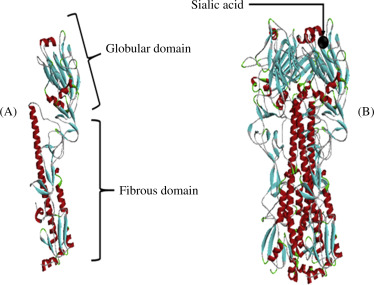
# New Study Uncovers Important Insights into IFITM3’s Role in Defending Against Flu Infections
Flu infections—previously viewed as a seasonal public health concern—may acquire new implications following the identification of a protein’s broader function in safeguarding against severe diseases and viral evolution. Researchers at The Ohio State University have uncovered additional roles for a protein, *IFITM3* (interferon-induced transmembrane protein 3), which has been recognized for its protective properties against serious influenza cases. Their research implies that this protein could be significantly more vital in fending off flu infections, especially from emerging strains originating in animals that could potentially transfer to humans.
The research, published in *Nature Communications* on October 30, 2023, offers a more comprehensive understanding of how IFITM3 operates—not only does it mitigate the intensity of flu infections, but it also significantly hampers the virus’s ability to swiftly mutate when it infects a new host species. A lack or insufficiency of this protein might lead to a perilous rise in both the chance of infection and viral mutations, which could transform animal-borne viruses into even more lethal threats to humans.
### IFITM3: A Defensive Shield Against Influenza
Recognized for its essential involvement in the body’s innate immune mechanisms, *IFITM3* aids in virus elimination through replication prevention. This protein becomes highly expressed upon the detection of an influenza virus within the body. Its function, thus far, has been primarily characterized as containing the virus and alleviating the severity of resultant illnesses.
Nevertheless, the latest findings from Jacob Yount, a professor in the Department of Microbial Infection and Immunity at Ohio State’s College of Medicine, alongside his research team, disclose several new capabilities of IFITM3. Specifically, the protein markedly raises the quantity of viral particles needed to elicit an infection. Essentially, individuals with adequate levels of this protein require lower doses of a virus for illness to manifest.
“For an extended period, IFITM3 has been acknowledged for preventing severe infections. What we’re now demonstrating is that this protein also modulates how much virus is required to initiate a primary infection,” Yount asserted.
### Heightened Susceptibility Among Those Lacking IFITM3
One of the most alarming revelations of the study is the heightened susceptibility of certain groups to flu infections due to genetic deficiencies in their capacity to synthesize IFITM3. Approximately 20% of individuals in China and 4% of those of European descent exhibit genetic variations that inhibit or completely obstruct the immune response’s ability to produce IFITM3. In instances of a pandemic—particularly one arising from an emerging avian or swine flu—these individuals may face considerably heightened risks, both in terms of contracting the flu and the severity of their illnesses.
“An absence of IFITM3 facilitates the infectious potential of a minimal viral dose,” Yount noted.
### The Imminent Risk Posed by Animal-Origin Viruses and the Role of IFITM3
The Centers for Disease Control and Prevention (CDC) is actively observing outbreaks of *H5N1 avian flu*, a strain prevalent among wild birds around the world that has already sparked outbreaks in poultry and even dairy cows. So far, 45 cases of H5N1 in humans have been reported. Yount underscored the grave implications of such scenarios if an avian flu virus adapts effectively to humans: “It’s the emergent viruses that we have yet to encounter where IFITM3 holds utmost significance.”
Historically, flu pandemics originating from the crossover of zoonotic animal flu strains—such as avian flu or swine flu—into the human population have led to substantial global disruptions. The notorious 1918 flu pandemic and several subsequent outbreaks were all results of such interspecies transmissions.
Researchers conducted tests with two strains of avian flu, including H5N1, on mice to ascertain how the presence or absence of IFITM3 affected infection rates. In genetically modified mice deficient in IFITM3, even one viral particle was sufficient to induce infection and inflammation. Conversely, the same viral dose did not infect normal mice with IFITM3. These results illustrate that IFITM3 elevates the infection threshold, providing protection against infections at low viral doses.
Further experiments involving human lung and immune cells demonstrated that silencing the gene responsible for IFITM3 made the cells more susceptible to various influenza viruses—regardless of their source, be it humans, poultry, or swine.
“Every one of those viruses triggered infections more frequently in the absence of IFITM3. This indicates that IFITM3 is universally crucial for combating flu viruses from multiple origins,” Yount elaborated.
### IFITM3 and Viral Evolution: Speeding Up Adaptation When Absent
Perhaps even more worrisome is that the lack of IFITM3 could hasten viral evolution. When a virus transitions from one species to another, it often requires time or multiple transmissions to adapt to